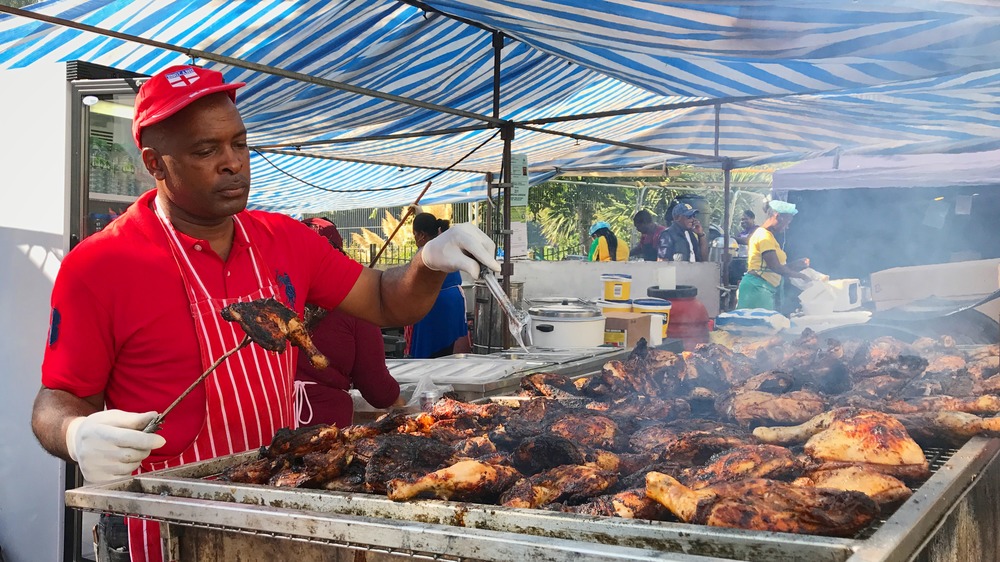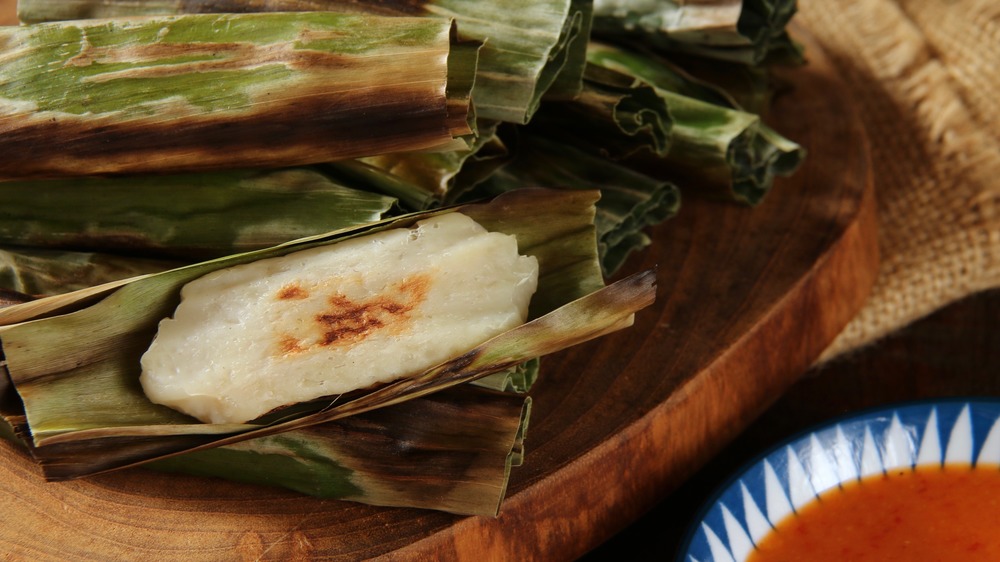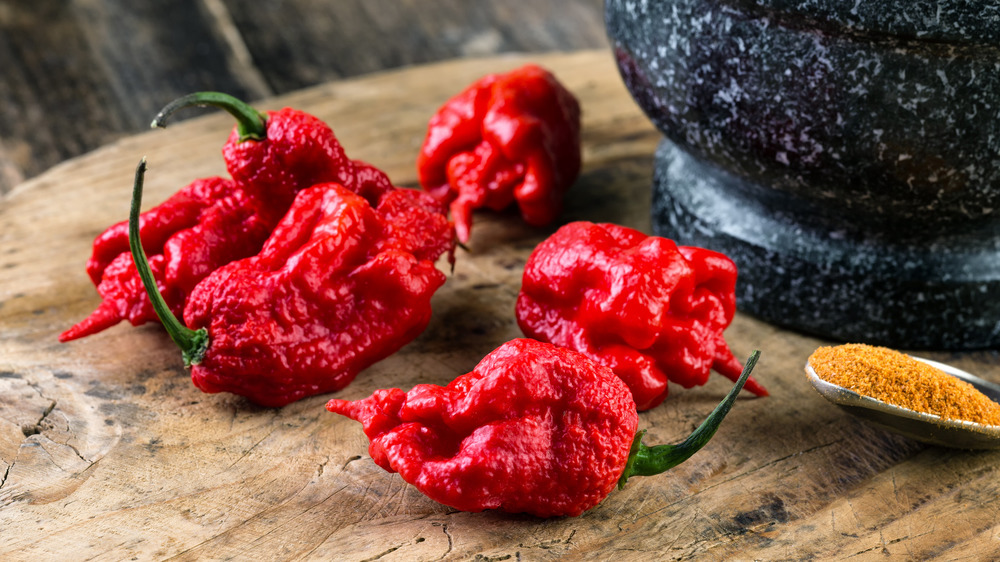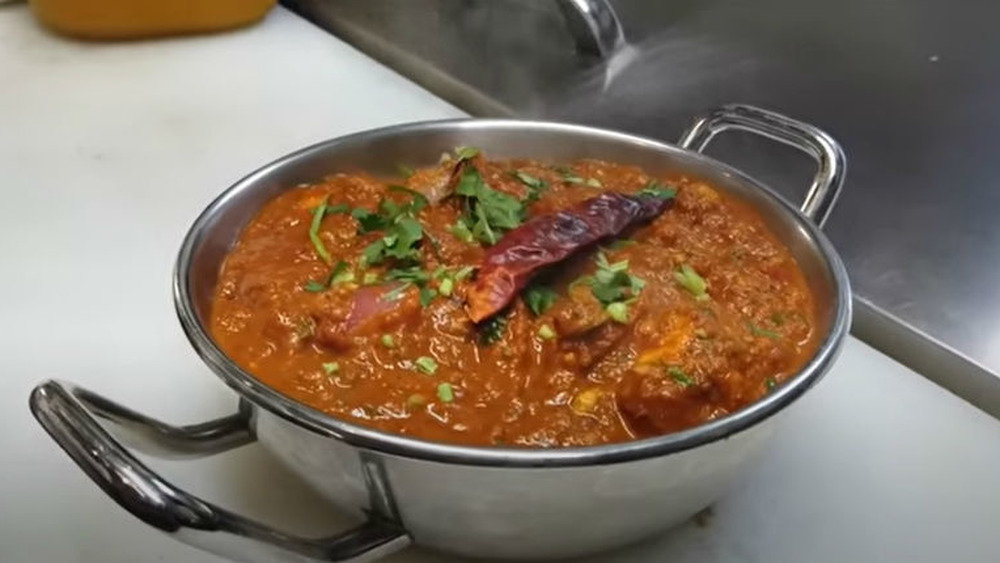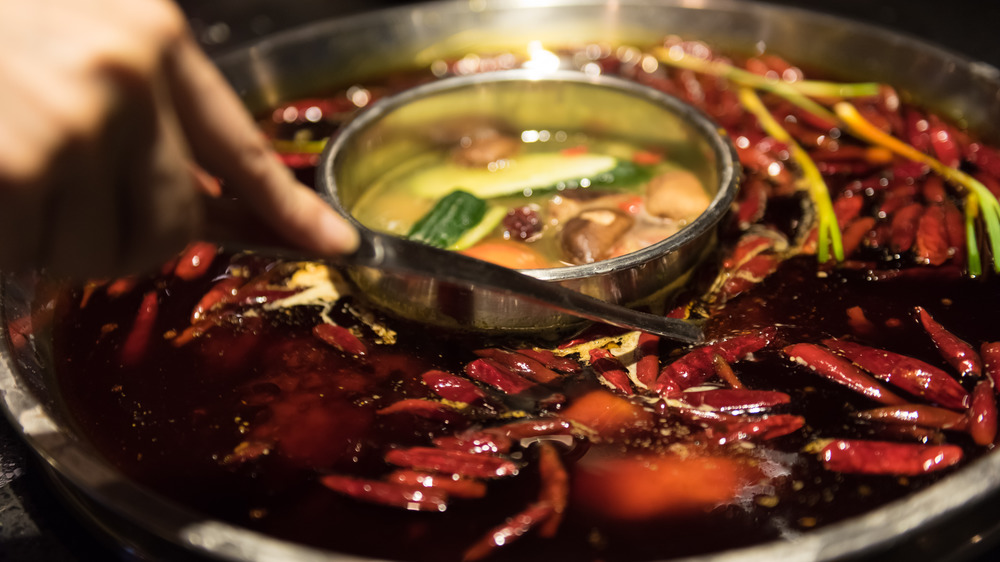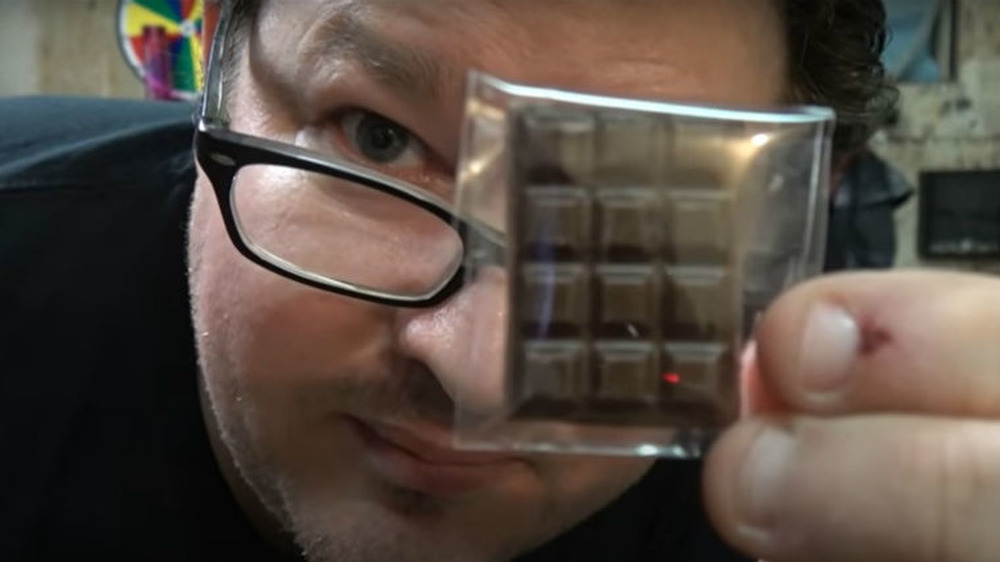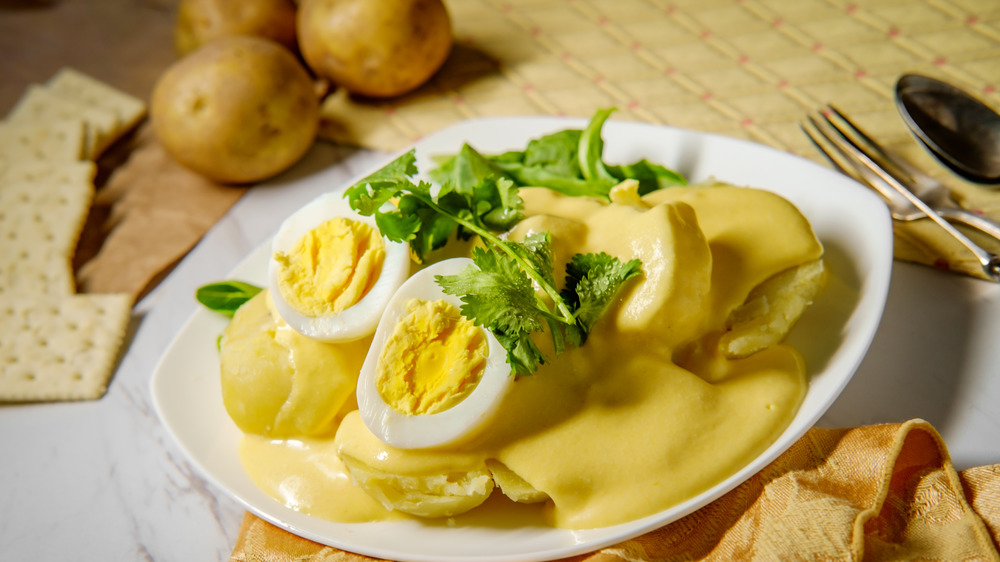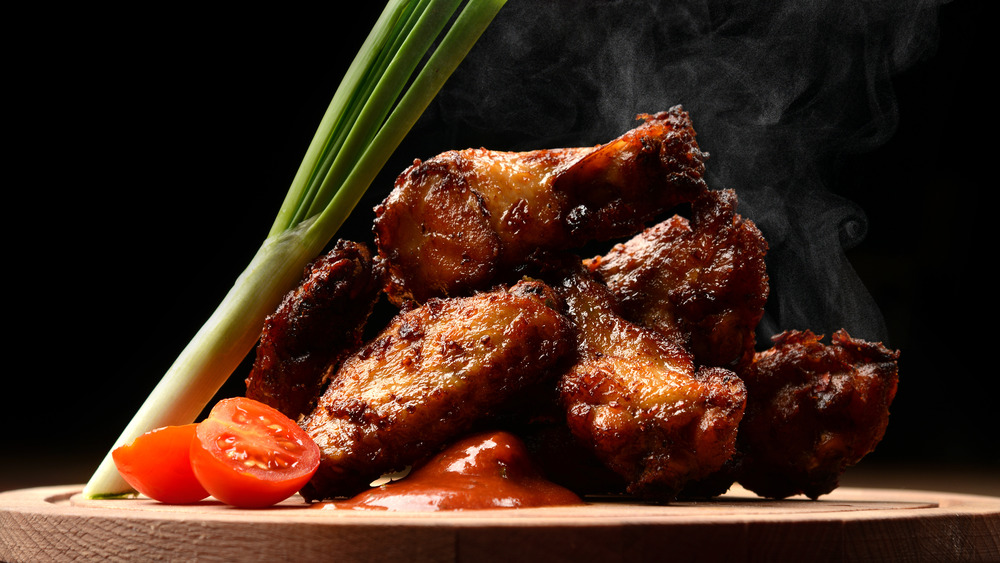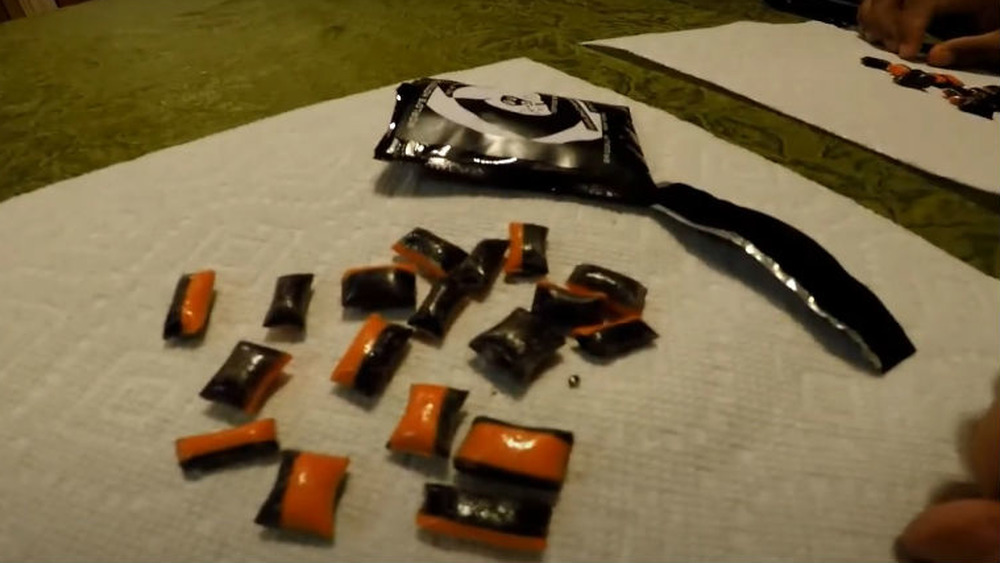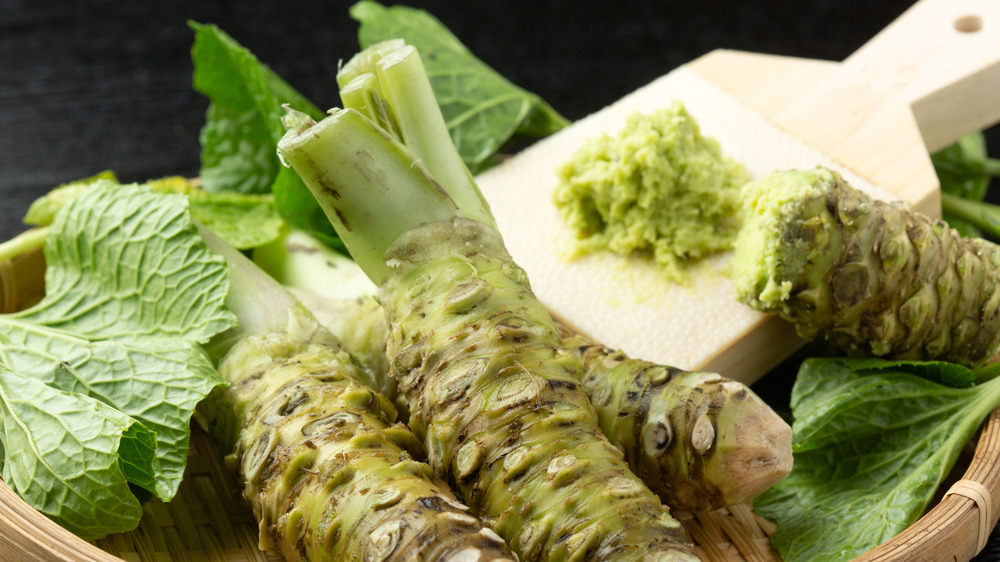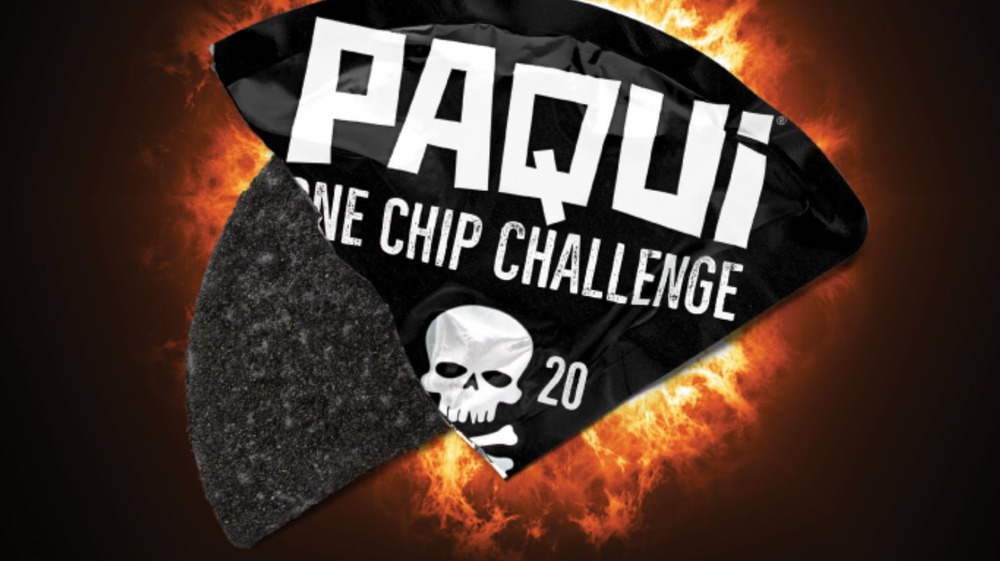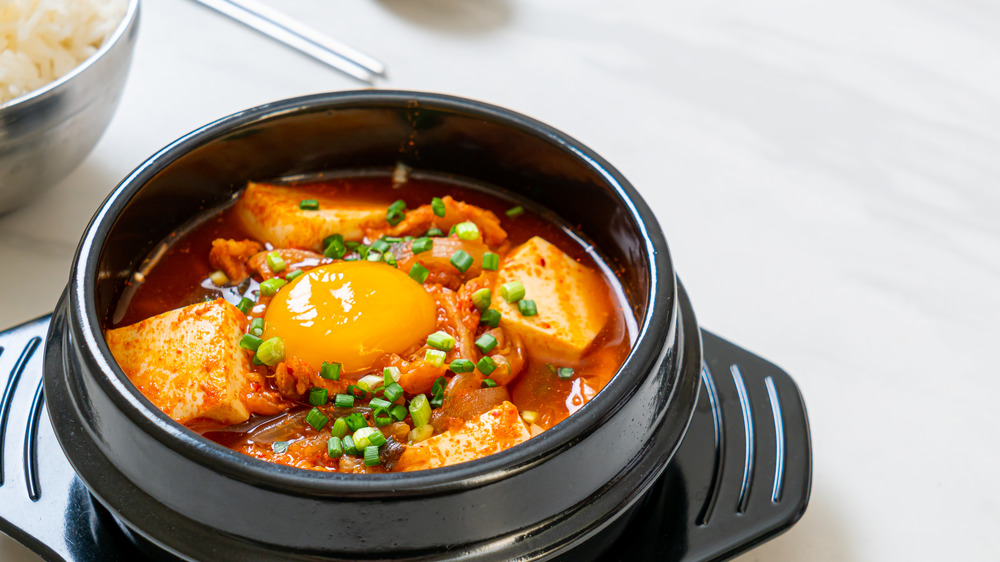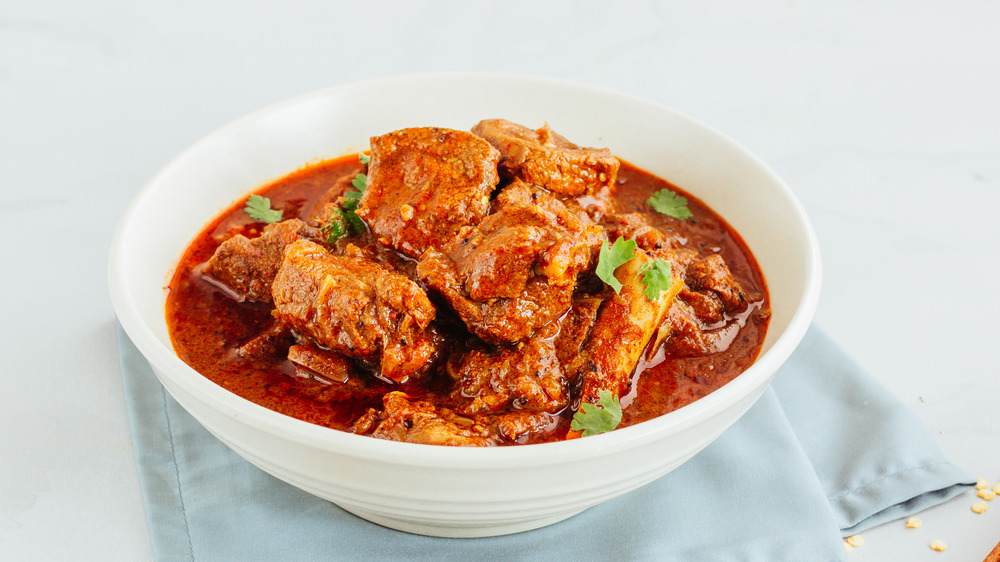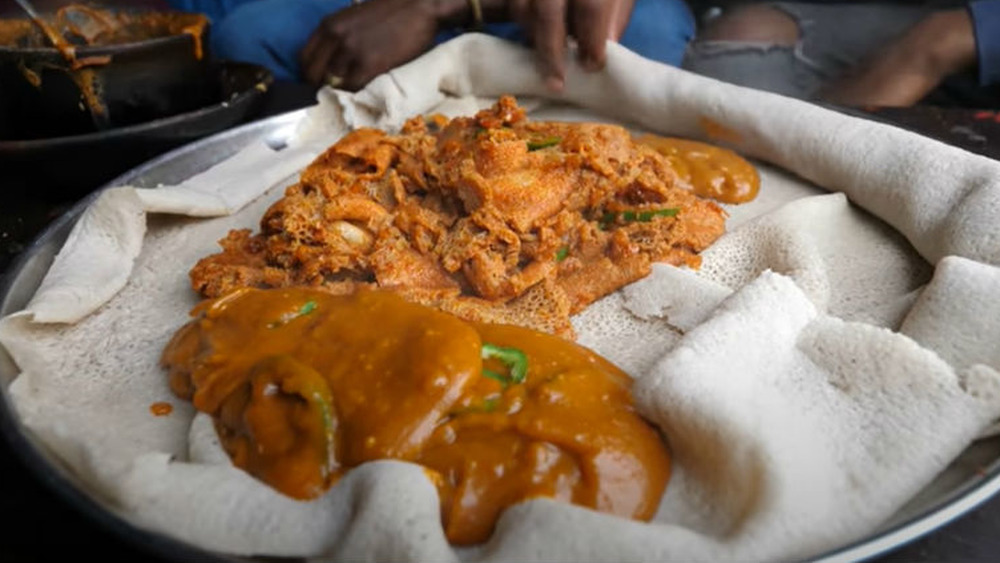The Spiciest Foods From Around The World
We may receive a commission on purchases made from links.
Some like it hot, and some like it cold. And some like it with so much spice they lay scorching waste to their intestinal tract. Many people can handle a nice little kick of heat in their food to get that culinary endorphin rush, but only a select few opt for a level of heat straight out of the fires of hell. Drinking a gallon of milk and sucking on ice cubes to quell the raging inferno that's passing through your body isn't anyone's idea of a great night, but alas, some brave souls do actually crave the chaos.
If you're a big traveler, you've likely come across some of these dishes while galavanting through foreign countries, and maybe even you've dared to dip a toe in and try one. Every country has its own unique spices and flavor profiles, and some know how to crank up the heat in ways you can't even imagine. So, make sure you have your ice cubes and milk handy because these are the spiciest dishes from around the world. You've been warned.
Jerk Chicken
When you're looking to travel someplace where the palm trees sway, calypso music rings through the streets at seemingly all hours of the day, and you're greeted with a "Hey, mon!" wherever you go, there's only one solution: Jamaica. Island life is one most of us fantasize about living, but even just a short visit to this reggae-laden paradise is enough to take away the hectic stress of the world. That relaxation your body feels, however, can come to a screeching halt if you decide to embark on the spice journey that is jerk chicken.
This spicy dish is found all over Jamaica, and even though you might have tried it at some local place near where you live, it's likely not properly chock-full of the spices they have on the island. The chicken is smothered in a mixture of thyme, garlic, nutmeg, cinnamon, cloves, and scallions. But, the heat comes from a healthy dose of either scotch bonnet peppers or habaneros.
Otak-Otak
If you're familiar at all with the Indonesian language, you might hear this dish's name and shudder with disgust. It means "brains"! However, fear not. There are no actual brains contained in the green pouches of tightly wrapped banana leaves. The name simply refers to the physical appearance, which, let's be honest, would still freak some people out. However, if they can get past the visual discomfort, they're treated to a spicy and delicious dish with a whole lotta heat raging through it.
Inside the outer banana leaf is a seafood cake made up of ground fish, tapioca starch, and native spices called belacan and galangal (similar looking to ginger but with the flavor profile of pepper). The heat comes from various local peppers ground up and mixed into the molded loaf. The color of Indonesian otak-otak is white, but Malaysia and Singapore have their own darker versions of the dish, the hue of which are due to the addition of turmeric, chili, and curry powders.
Carolina Reaper
When you're describing heat levels to someone curious about exploring the exhilarating world of Scoville units, they'd likely lose interest in tempting their tongue on something that shares the same surname as Death itself. However, if that hooded embodiment of horror doesn't send shivers down their spine, then maybe they are ready for the world's spiciest pepper: the Carolina Reaper.
The pepper didn't actually grow naturally. It was created by a man named Ed Currie, the founder of the popular PuckerButt Pepper Company. He came up with the blazing idea while studying indigenous populations near the equator. He told Thrillist, "One of the things they all had in common is they don't have heart disease or cancer. And one of the things they all had in common was capsicums [peppers] at just about every meal and in their water."
He learned there were some anticancer properties in capsaicin, the ingredient that produces the burn in hot peppers, so after some work crossbreeding various peppers he owned, he ended up with a pepper that holds the Guinness World Record as the hottest on the planet, pulling in at a frightening 1,641,000 Scoville heat units!
Phaal Curry
There's a reason why "phaal" sounds phonetically similar to the word "fail." Unless you have a tolerance to heat that rivals Lucifer, there is no way you'll make it through this spicy dish with any sort of success. However, if you do want to attempt the plunge (and ignore those taste buds pleading with you not to), you don't have to schlep all the way to the United Kingdom where it originated. The Brick Lane Curry House in New York City serves it up to those who dare to brave the waters. Keep in mind: Cowards need not apply.
The dish is so hot the chefs who prepare it wear gas masks to prevent the pepper fumes from torching their nostrils and throats. Using 10 to 12 chili peppers — including the world's hottest Carolina Reaper — the final product comes in at over two million Scoville units! The restaurant's website even has a disclaimer about it: "An excruciatingly hot curry, more pain and sweat than flavor. For our customers who do this on a dare, we require you to state a verbal disclaimer not holding us liable for any physical or emotional damage after eating the curry." Yikes.
Sichuan Hot Pot
Cuisine from China's Sichuan province is known as some of the spiciest in the world, so when you sit down to a meal with dishes from this region, just know you're traversing territory that will set your tongue on fire. One of the most popular dishes is hot pot, a big cauldron of boiling pepper-oil broth full of a variety of vegetables and meats. Everything floating in the dark red liquid is glistening with flavor, but that doesn't mean just anyone can dive in head-first without a problem.
Don't let that amazing aroma of meats and spices fool you. Bobbling all around the pot like sizzling buoys are boatloads of Sichuan peppers ready to attack your mouth and leave you regretful of your decision to indulge. And not only is the spice level off the charts, but the temperature of the pepper oil is enough to take a few layers of skin off your mouth, so hot pots are a one-two punch of terrifying.
The World's Hottest Chocolate Bar
When you think of chocolate, rarely does the word "spicy" come to mind. Chocolate is supposed to be for dessert, after all! However, it was only a matter of time before some heat-addicted chili-head with access to candy-making equipment stepped in to change the landscape of chocolate in the hottest way possible. The people at Vat19 are those chili heads, and they dare you to dabble in a milk chocolate bar they flaunt as "hell-infused."
You can't just declare something the "World's Hottest Chocolate Bar" without living up to the hype. To ensure the chocolate packs the deserved punch the lunatics at Vat19 want, they use chili extract with a Scoville heat unit of nine million to mix in with the batter. The bar is so potent that each one is extremely small, preventing a human from consuming potentially hazardous amounts of the extract. If you have a chocolate-addicted friend who also loves intense heat, this might be a great gift. Anyone else simply looking for the sweet goodness of normal chocolate, however, needs to steer clear.
Papa a la huancaína
The name of this dish is quite a mouthful, but if you like heat, don't let the potential shame of totally mispronouncing it veer you off its course. This delicious and spicy Peruvian appetizer is basically a mound of boiled yellow potatoes with a hard-boiled egg resting on top. Sounds pretty innocent, right? Well, not after you ladle on a heaping dose of that rich yellow sauce. That sauce will smack you across the face. Hard.
It's easy to doubt this dish's heat because of the yellow color — it doesn't have that dark red hue alerting you to the Scoville terror inside. But the sauce is loaded with both ají amarillo and habanero peppers, making for a surprisingly scorching flavor. Funny enough, the dish is served cold, which also might fool you into thinking it's tame. But don't let the yellow color or the cool temperature convince you otherwise, or you're in for the surprise of your life.
Suicide Chicken Wings
With a name like this, you know exactly what you're getting into when you nervously place that first spicy wing up to your lips and feel the fumes singe your nostrils. These wings are not for the faint of heart — and probably anyone with heart problems in the first place. These originated in the United States, where chicken wings are a super popular appetizer, especially on game day. However, these things might have you missing the game completely because you'll instead hitch a ride to the hospital with severe capsaicin cramps.
Forget everything you know about normal hot wings. These little handheld pieces of hellish fury are smothered in a fiery mixture of Tabasco sauce, dried chili peppers — with the seeds included for an extra kick of heat – and fresh chilis. No amount of bleu cheese can throw this heat level in a chokehold. You're on your own after making this decision. Enjoy the game.
Vertigo Candy
Wait, there's a spicy candy out there with so much spice it might just induce a feeling of nauseating vertigo? Well, according to Jeremy Glass, a writer who tried it and then wrote about his horrific experience, it put his body through all sorts of frightening discomfort, and this was a guy who snorted powdered alcohol! He went into the challenge feeling slightly apprehensive, but he was in no way ready for what these little chewy cubes had in store for him.
In his article, Jeremey explains Vertigo Pepper Candy clocks in at two million Scoville units and is made using five of the hottest peppers in the world: Moruga Scorpion, Chocolate 7 Pot, 7 Pot Jonah, Trinidad Scorpion, and Bhut Jolokia. So yeah, this thing comes prepared to whoop your behind in five different ways. How exactly did Jeremy feel while chewing it up?
"The spiciness is positively mind-numbing. It felt like I was having a stroke and on the brink of vomiting all at once. It was insane, horrible, and reminiscent of what I think it's like to be set on fire inside an active volcano. The heat in my mouth lasted a solid thirty minutes after I drowned myself in milk to neutralize the burn. Everything that touched my tongue tasted scorching hot. My eyelids were literally sweating by the end of it." Sounds ... fun?
Wasabi
There's really no reason to dabble in this spicy paste unless you're eating sushi, and every sushi addict out there is familiar with that little nugget of neon green that comes with each meal. Japan offers one of the most unusual spice experiences with wasabi. Instead of a dense burn that lingers on the tongue for tens of minutes after exposure, it hits you fast and hard for only several seconds, and then it completely fades away quickly. Wasabi is placed on sushi in very small amounts to help add another level of flavor to the fish, but sushi connoisseurs will tell you the stuff nearly all of us get at our favorite Japanese restaurants — over 95 percent — isn't actually authentic!
Not authentic? How? Well, the actual wasabi plant is difficult to grow, which makes it way more expensive to purchase. The shelf life is also short, so it's not in a restaurant's best interest to purchase it. Instead of the real thing, many places make their own "wasabi" using horseradish, mustard seed, cornstarch, and green food dye. However, even though the stuff at your local sushi spot may not be legit, it still has the brief but searing burn sushi-heads know and love.
Paqui One Chip Challenge
Ah, chips. The classic party food staple. You'd be hard-pressed to find someone who doesn't love munching down a handful while they mingle with friends. That is, unless somehow a deadly Paqui chip found its way into the bowl, cleverly disguising itself as an innocent Dorito, when in reality, it's a triangle of pure terror waiting to send someone into instant panic mode. Videos of people attempting the Paqui Challenge tore through YouTube when the chip hit the market, and most were left in tears at its evil power.
The challenge was simple: Eat the chip and see how long you can last without milk, water, or anything else that dulls the heat. Sounds simple until you realize each single-wrapped corn chip is covered in a thick dusting of spicy Carolina Reaper peppers, Scorpion peppers, and Sichuan peppercorns. The company warns those who tempt the challenge to wear gloves so they don't accidentally touch their eyes while trying to endure the sudden rush of pain. The only thing worse than the burn is the realization you permanently blinded yourself.
Kimchi Jjigae
Kimchi is a very polarizing food for those unfamiliar with it. Some people absolutely love the salted and fermented Korean cabbage and radishes, but others are completely turned off by the sour taste. Regardless of what you think of the flavor, it's one of the healthiest foods in the world, and over 1.5 billion tons of it is consumed every year in the country. Yowza! Clearly, there's something to this dish that has so many people going crazy for it. Fewer kimchi fans, however, dare to dabble in a version called Kimchi Jjigae.
Green onions, garlic, tofu, mushrooms, and a ton of red chilis join forces in a big boiling pot of broth. The essence of all the ingredients slowly seep out, creating a rich and incredibly flavorful dish, but at the same time, it offers intense amounts of heat. And considering the broth is a scorching hot temperature as well, it can prove tough to handle if you're not super keen on spicy things.
Pork Vindaloo
India is full of incredibly unique spices, which helps cement it as a country with some of the spiciest cuisine on the planet. The city of Goa is where pork vindaloo originated, and it's a mixture of insane heat and vinegary tang you'll want to try. Funnily enough, even though the word "aloo" in Hindi means "potato," traditional vindaloo doesn't include the starch. It does, however, have several other ingredients intent on testing the limits of your stomach lining.
The ingredient list in pork vindaloo isn't long and intricate: garlic, pork fat, vinegar, cane sugar, and enough Kashmiri chilis to scare off magma. The meat usually marinates for at least one full day before serving so it soaks up as much of the painful heat as possible. There's only one thing to do after that: Close your eyes, take a deep breath, and prepare your throat for a deep volcanic dive.
Wat
If you're planning a trip around the world specifically to try unique spicy dishes, Ethiopia might not jump out as one of your top choices. This, however, is a mistake. What this country offers is a stew called wat, and it's more than worth venturing off course for. The stew is full of chicken, beef, veggies, and spices sizzling in a broth thickened by cooked onions. But it's the combination of spices that take center stage and steal the show.
The heat stems from an Ethiopian spice mixture called berbere, which consists of a lot of "chiles, garlic, ginger, basil, korarima, rue, ajwain or radhuni, nigella, and fenugreek." Whew, that's quite the mouthful, literally. Traditionally, the stew is eaten on top of a spongy flatbread, which helps absorb some of the spice so it doesn't rock your world too much. But that still doesn't mean you shouldn't proceed with caution.

